Civilian Conservation Corps at Trout Lake Forestry Headquarters
Introduction
Text-to-speech Audio
Trout Lake Headquarters for Wisconsin Forestry began with big goals in 1911. Wisconsin conservation employees were often stretched thin, with challenges like fire prevention and suppression, replanting the recent cutover, and maintaining the property of the Wisconsin Forest Reserve. In 1933, this changed with the deployment of Franklin D. Roosevelt’s “tree army,” formally known as the Civilian Conservation Corps (CCC). Trout Lake Headquarters had the CCC Crystal Lake Camp (on White Sand Lake) and CCC Star Lake Camp dedicated to helping to protect and improve what will become the Northern Highland American Legion Forest. The fruits of this collaboration between Wisconsin State Foresters, U.S. Army and federal government are still visible today across the Northwoods.
Images
CCC Camp Crystal Lake on White Sand Lake

CCC Camp Crystal Lake winter work crew
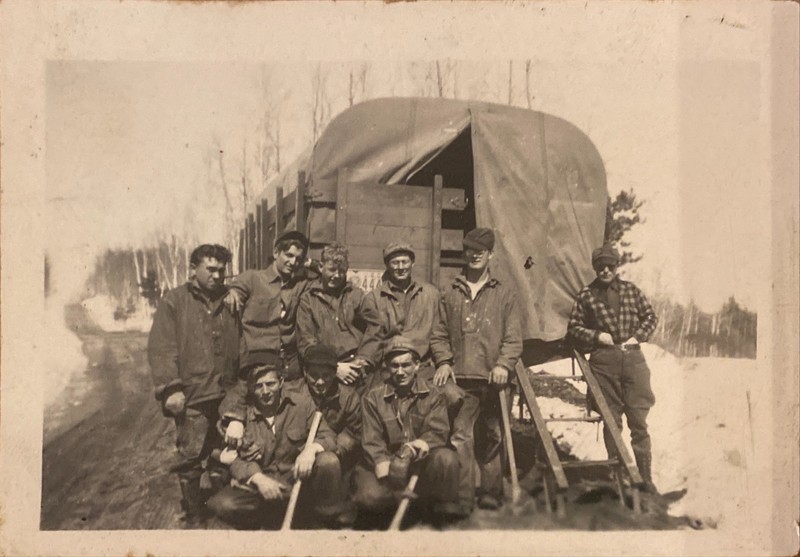
Ranger Garage at Star lake
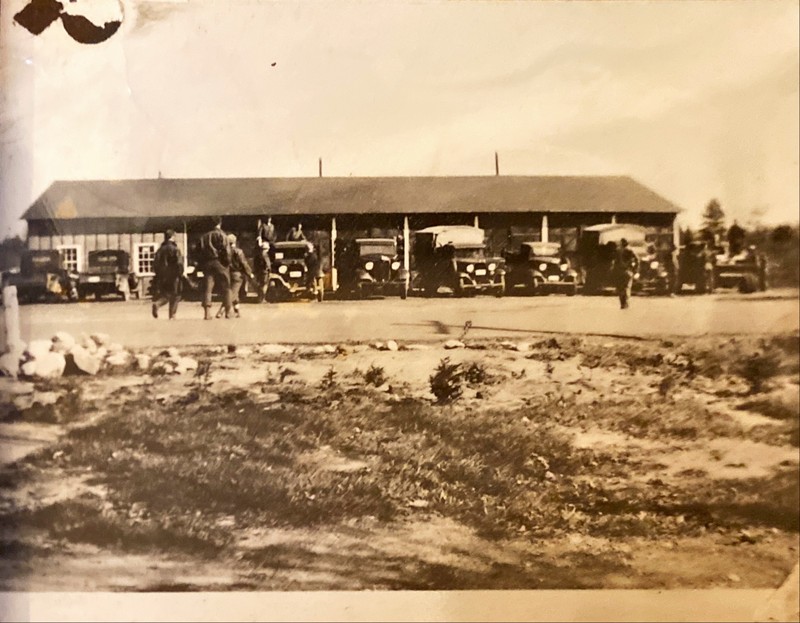
Barracks at Star Lake

Barrack at Star lake
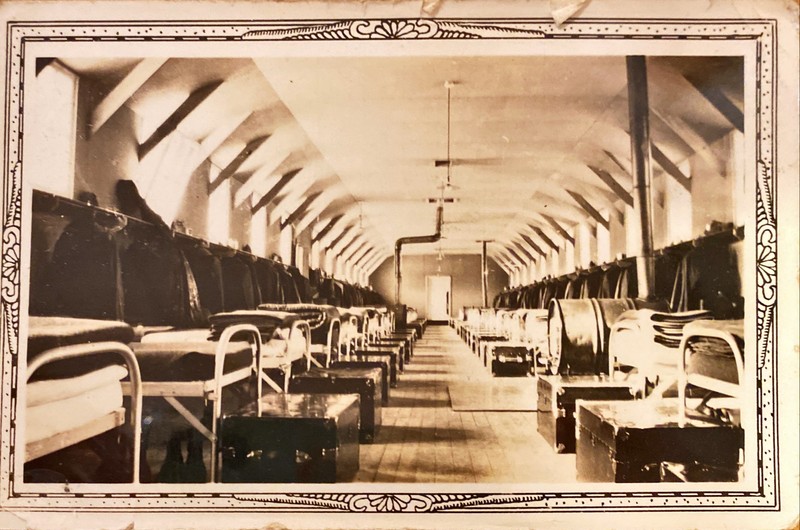
CCC showcases educational opportunities at Camp Crystal Lake
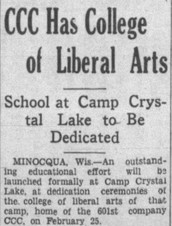
Dormitory built by CCC workers, illustrating some of the 4,000 blocks made on site for construction
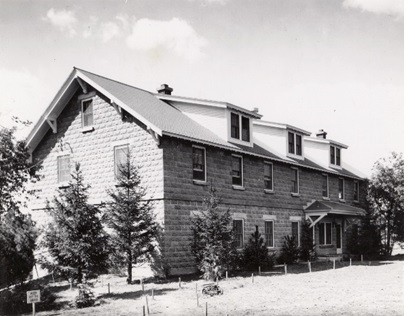
Star Lake CCC road building crew

Early image of Trout Lake Nursery
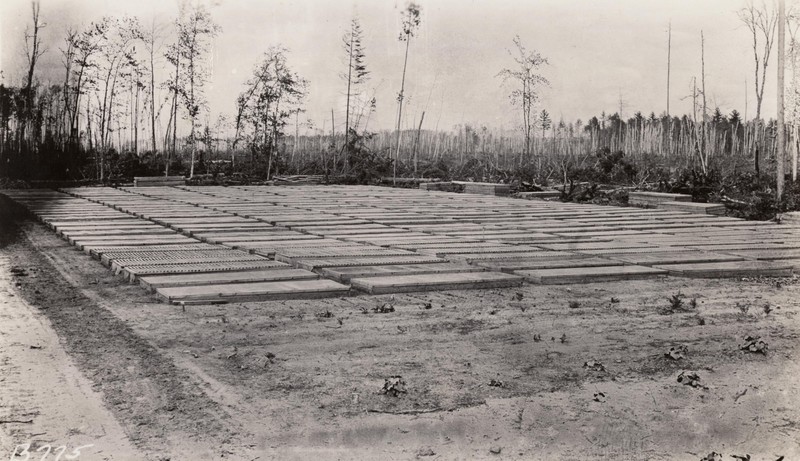
Trout Lake Nursery
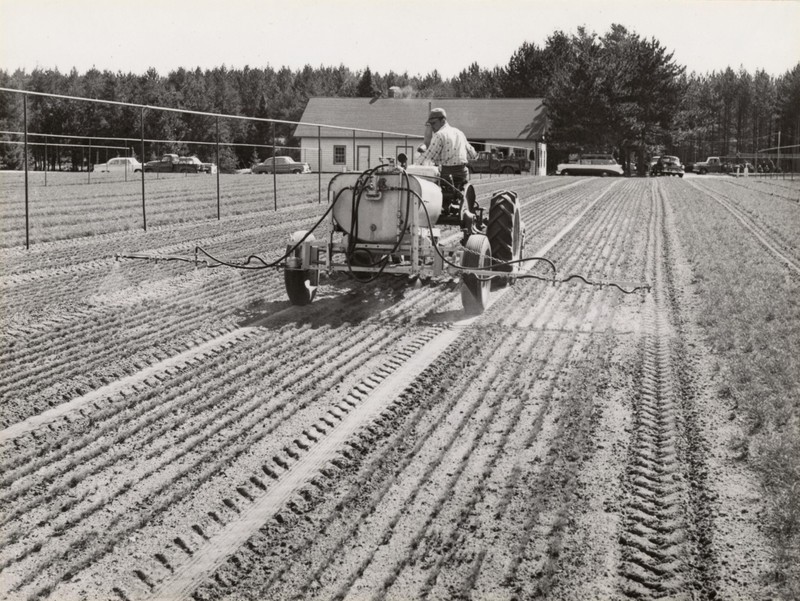
Backstory and Context
Text-to-speech Audio
Protecting the forest, lakes and streams of the Northwoods proved challenging to all parts of the Wisconsin Conservation Commission at the start of the Great Depression. Budget shortfalls, extended droughts, forest fires, poachers, and blights led to difficult choices among rangers tasked to preserve resources. Ultimately, these challenges were understood by the federal government, which delivered relief, recovery and reform under the New Deal in 1933. The Civilian Conservation Corps (CCC) specifically helped rural areas with conservation in federal and state forests.
Here in the Northwoods, several CCC camps were dedicated to support the rangers in the Northern Highland American Legion Forest. Camp Crystal Lake (on White Sand Lake) and Star Lake CCC camps regularly deployed men to Trout Lake for conservation projects. Forest rangers worked with CCC project supervisors to task teams of men to complete vital conservation projects. Back at the CCC camps, the U. S. Army ran the barracks, food, transportation, discipline and bureaucracy associated with running an outfit with 150 enrollees.
CCC men between the ages of 18 and 26 enrolled six months at a time for room, board and $30 a month, $25 of which were sent home to help their families through the Great Depression. Many families paid over-due taxes and food bills with the funds sent home by their CCC enrollee sons. These young men enjoyed rigorous work, athletic competitions, educational opportunities, and more during their time in the CCC.
Projects on the Trout Lake campus included CCC-constructed buildings like the current ranger station, dorm and shop buildings. The CCC men even manufactured the cement blocks and ran a sawmill at Trout Lake to facilitate construction. This work was often performed in the winter because spring and summer demanded that the CCC boys be in the field and ready to contain fires or other threats.
Fire season marked dangerous and difficult duty for CCC men: fire watch in tall towers (that they also built), tent living in remote CCC subcamps, and battling fires that protected both the forest and private property. Setting up telephone lines and building roads proved to be key projects that improved response time to forest fires and other calamities. One time, the Camp Crystal Lake CCC men helped with a police dragnet to capture three escaped prisoners from McNaughten south of Minocqua.
Trout Lake Nursery’s maintenance, seed collection, seed sewing, and seedling preparation and planting of trees were a big part of the CCC efforts at Trout Lake. These efforts impacted the entire state as seedlings were moved from the nursery cooler to railroad boxcars for shipping to reforestation projects across the state.
Stories abound regarding the CCC men at Star Lake and White Sand Lake. Characters like CCC project supervisor “Wild” Bill Cady built the road to White Sand Lake that is now called County Highway K and is designated a “Rustic Road.” Back in the day, the CCC road builders wrote “Wild Bill’s Road” on a large boulder. Sometimes, CCC men found trouble like raiding Wisconsin Conservation fyke nets and taking a dozen muskies for a fish fry back at the CCC mess hall. The CCC poachers were caught at Camp Crystal Lake and blamed too much beer for their violations. The Crystal Lake and Star Lake CCC projects included building and maintaining rearing ponds and fish hatcheries, improving trout streams, and stabilizing lake habitats.
As the U.S. began to spool up preparations for World War II, CCC camps slowly became decommissioned to redirect resources and manpower to the war effort. Officially, Camp Crystal Lake ended in May of 1938 (some sources claim a later closing date of 1941), and Star Lake was disbanded in May of 1937. By 1941, the Camp Crystal Lake campus on White Sand Lake was leased to create the Boy Scout Region 7 Adventure Canoe Base that operated into the 1980s. Star Lake CCC camp became a prized boat landing and campground in the Northern Highland American Legion Forest.
After 1938, the Trout Lake Forestry Headquarters would have received their CCC project teams from Camp Mercer, located 2.5 miles east from the town of Manitowish Waters. Camp Mercer and all remaining CCC camps were disbanded in 1942 to respond to the U.S. formally entering World War II.
Sources
Christensen, John A. Northwoods Life. Trout Lake, WI. 2005.
Holton, Thomas J. WHITE SAND LAKE: A STUDY OF LAND USE ALONG ITS SOUTHERN AND EASTERN SHORES, 1903-1974., July 14th, 2009. Accessed April 20th, 2024. https://minds.wisconsin.edu/bitstream/handle/1793/35442/HoltanSpring09.pdf?.
Civilian Conservation Corps (U.S.), Sparta District (Wis.). Sparta District Annual 1937, Civilian Conservation Corps, Sixth Corps Area. (Baton Rouge, La.: Direct Advertising Co., 1937); online facsimile at http://www.wisconsinhistory.org/turningpoints/search.asp?id=1651
https://www.mwhistory.org/biennial-report-state-conservation-commission-of-wisc-1933-34-federal-ccc/. Biennial Report State Conservation Commission of Wisc. 1933-34. Retrieved 11-16-2018.
https://commons.m.wikimedia.org/wiki/File:CCC_Camp_Crystal_Lake_near_Minocqua_WI_ca1939_GAG01.jpg
Pioneer Park, CCC Museum, Rhinelander, WI
Pioneer Park, CCC Museum, Rhinelander, WI
Pioneer Park, CCC Museum, Rhinelander, WI
Pioneer Park, CCC Museum, Rhinelander, WI
Leader-Telegram (Eau Claire, Wisconsin) · 16 Feb 1938, Wed
UW Digital Collections-Wisconsin Conservation Commission or DNR
Pioneer Park, CCC Museum, Rhinelander, WI
UW Digital Collections-Wisconsin Conservation Commission or DNR
UW Digital Collections-Wisconsin Conservation Commission or DNR
